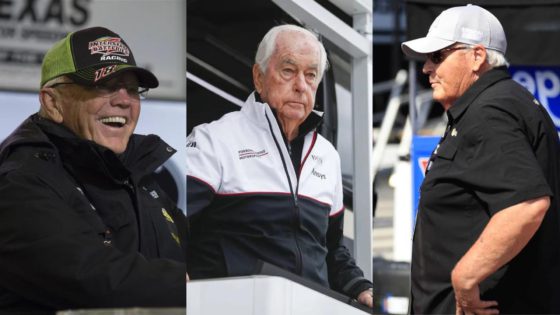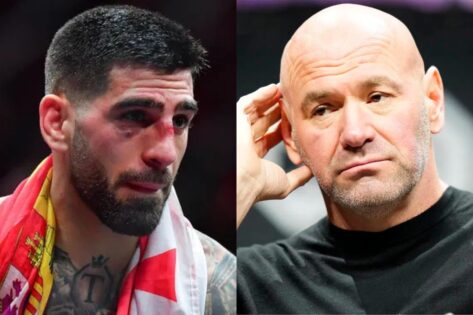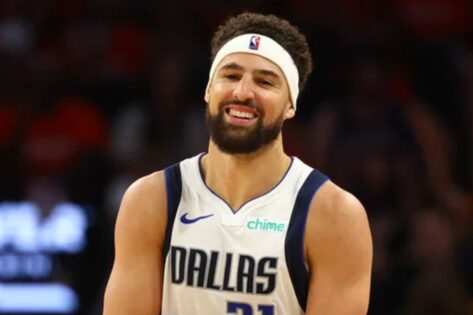Hendrick Motorsports didn’t just rise; it became NASCAR’s benchmark. Founded in 1984 by Rick Hendrick, the team swiftly built its first facility and won its inaugural Cup race at Martinsville that same year. Over subsequent decades, Hendrick amassed a record 317 Cup wins and 14 championships and introduced innovations in engine development and race strategy that reshaped the sport. Meanwhile, Team Penske charted its course through precision engineering, borrowing from IndyCar and sports car racing into Cup Series success with methodical focus on detail and consistency. On the other hand, Joe Gibbs Racing quickly turned from underdog to legend, winning the 1993 Daytona 500 just minutes into its second season. They cemented their dynasty with five Cup Series championships and became the winningest NASCAR team across all series. Their cohesion eventually made the teams the pillars of NASCAR’s modern era. But Trackhouse Racing’s challenge is emerging from a different kind of playbook.
Born out of Chip Ganassi Racing’s assets and launched in 2021, the team quickly built a multi-car operation and focused on bold hiring and development. The team then grew to a three-car lineup, signing a contract that spans Xfinity, Trucks, ARCA, and IMSA. Along with Cup stars Ross Chastain and Shane van Gisbergen, it also inked rising talent Connor Zilisch on a multi-series developmental deal and technical leaders like Darian Grubb, who has Cup titles and Daytona 500 wins in his resume. With steam building from underdog momentum, Trackhouse is now plotting a trajectory beyond mere surprise success.
Trackhouse Racing’s vision for peak performance by 2027
In a pre-race interview at Watkins Glen, when asked about the strategic reset and evolution of Trackhouse Racing marked by deliberate investments in knowledge and infrastructure designed to elevate the team’s competitiveness in the Next Gen era, owner Justin Marks didn’t shy away from revealing the truth of the process. “Well, I think if you look over the last deck, the history of the sport, there’s always ebbs and flows and periods of power of different teams and all that, and it’s knowledge and technology and process development and things like that,” said Marks.
NASCAR dynasties from Petty Enterprises in the 1960s to Hendrick Motorsports‘ modern era haven’t held dominance forever, but they have evolved by investing in engineering and organizational depth. Trackhouse’s ride up the ladder followed this arc, but as the sport shifted into the Next Gen era, those shifts in capability became even more profound. “The teams didn’t know how to fully exploit the next-gen car, and we were going to the races in 22 and 23… and we’re a great team at execution, that fell into our wheelhouse,” he said. “We had a lot of success in 22 and 23. Then you have the normal players, your Hendricks and your Gibbs and Penskes, that over time start to activate the depth in their organizations and the tools and technology.”
J
AUSTIN, TX – MARCH 25: Trackhouse Racing owner Justin Marks talks to the media before the EchoPark Automotive Grand Prix on March 25, 2023, at Circuit of the Americas in Austin, Texas. Photo by Matthew Pearce/Icon Sportswire AUTO: MAR 25 NASCAR, Motorsport, USA Cup Series EchoPark Automotive Grand Prix Icon169230325089 | Image credits – Imago
Trackhouse shined in the early Next Gen era, with Ross Chastain‘s COTA win in 2022 and the team’s surprising playoff run in 2023 being driven more by sharp preparation and flawless execution than massive R&D investment. They capitalized on the phrase when execution gave teams an edge amid widespread uncertainty. “And so as that knowledge center around the cars has developed, that’s where we have found where it’s been more difficult for us, because as an organization, we’re not as big as Penske and Gibbs and all that,” he continued. Team Hendrick and Gibbs have hundreds of engineers, simulation rigs, and wind tunnel data refining setups, lap after lap. Trackhouse discovered that sheer organizational scale is critical when the field catches up.
“I’ve seen the plan, and I’ve seen the methodology and the psychology around the plan, and it is a championship team framework,” Marks emphasized. “It’s going to take money, it’s going to take sacrifice, it’s going to take patience, it’s going to take a lot of work… we understand now where we have to make investments and focus our time to get back to where we need to be, and that’s the plan.” Trackhouse’s reinvention isn’t symbolic; it is rooted in bold investment and championship-caliber structure. Their strategy recalls how Stewart-Haas recalibrated around Tony Stewart’s era or how Chip Ganassi transformed in the early 2010s through organizational revamps.
But the plan is moving steadily for the team, and Marks acknowledged it, saying, “We get the same as Hendrick does, because we’re a key partner with Hendrick, but Hendrick does have a lot of depth in their organization that we don’t have… If it were 2013, I think it would be a lot harder to do it, because we’re not designing and manufacturing cars anymore… It’s a huge thing for us to be key partners with Chevrolet, so we have access to data, we have access to support.” Trackhouse benefits from strong OEM backing and technical support, much like smaller satellite teams, but still must translate that data into performance. Martin Truex Jr.’s early years at Furniture Row are a reminder that data alone won’t win races; they need execution chops.
“I think ultimately we’ll end up in a business structure that puts us in a position to succeed in contemporary championships,” Marks concluded. His confidence is rooted in tangible shifts, expanded facilities, deeper analytics, upgraded engineering, and refined team culture. It suggests Trackhouse is poised to join the sport’s elite not through hype, but through calibrated investment. That growth could make their next chapter not just competitive, but transformational.
Hendrick Motorsports eyes key stretch in playoff push
For decades, NASCAR’s Cup Series has been ruled by the so-called “NASCAR Trinity,” namely HMS, JGS, and Team Penske. Hall of Famer Jeff Gordon once summed it up: “The level of excellence those three teams have maintained is unmatched.” But Justin Marks is now openly challenging that dominance. With rookie Shane van Gisbergen already racking up multiple wins and Ross Chastain consistently in playoff contention, Marks believes his team is poised for a serious breakthrough by Daytona 2027. “You have to continuously evolve or you get left behind,” Marks said.
Central to this evolution is Trackhouse’s recruitment of Todd Meredith, a championship-winning NASCAR executive now serving as President of Racing Operations. “Todd Meredith… knows what it takes to assemble great working groups, how to maximize your opportunity every single week,” Marks explained. Under Meredith’s guidance, the so-called “2.0 process” is focusing on organizational restructuring, smarter budgeting, and investments in cutting-edge tools. “When we unload at Daytona in 2027, I think the team will just be more powerful than it’s ever been since its inception,” he added.
Meanwhile, the established powers remain dangerous. HMS, led by Chase Elliott and William Byron, is eyeing a strong finish to the regular season. Elliott sits just 18 points behind Byron in the standings. Pointing to the upcoming stretch, crew chief Alan Gustafson said, “Watkins Glen, Richmond, and Daytona” will be crucial. Elliott’s history includes two wins at Watkins Glen and consistent form at Richmond, making this period a golden chance to reinforce HMS’s championship credentials while fending off challengers like Trackhouse.
The post Justin Marks Spills the Secret of Rick Hendrick & Co’s Unshakable Dominance As He Eyes Their Spot appeared first on EssentiallySports.



